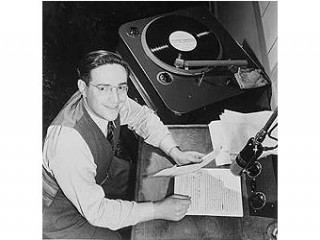
William Gottlieb biography
Date of birth : 1917-01-28
Date of death : 2006-04-23
Birthplace : Brooklyn, New York,United States
Nationality : American
Category : Famous Figures
Last modified : 2011-09-02
Credited as : photographer, newspaper columnist, era of jazz
0 votes so far
Gottlieb was born on January 28, 1917, in the Brooklyn borough of New York City, though he grew up in Bound Brook, New Jersey, where his father ran a lumber and coal business. He studied economics at Pennsylvania's Lehigh University and was elected to Phi Beta Kappa, the oldest undergraduate honors organization in the United States. Gottlieb was first introduced to jazz during his sophomore year at college while recovering from trichinosis, an intestinal disease he contracted from eating undercooked pork. For weeks, Gottlieb lay in bed with nothing to do. A friend began bringing him jazz records to pass the time and Gottlieb was soon smitten with the music of Louis Armstrong and Duke Ellington.
After regaining his strength, Gottlieb returned to Lehigh and began writing a jazz column for the Lehigh Review . He graduated in 1938 and worked at the Washington Post , selling ads. In time, he persuaded the editor to let him write a weekly jazz column, which he called "Swing Sessions." Initially, a Post photographer tagged along to take pictures, but the paper decided this was too costly since most shows started so late at night that the photographers racked up excessive overtime hours.
Not to be discouraged, Gottlieb decided he could take his own photos. He purchased a camera, read the manual, and gleaned a few basic tips from the Post photographers. The Post paid Gottlieb for his weekly column but not for the photos. For Gottlieb, the focus always remained on the writing. He intended the photos to complement his words but never really fussed over the process. In fact, Gottlieb took only a few photos of each subject at a time because he could not afford the flashbulbs.
In 1941, Gottlieb left the Post to pursue graduate work in economics at the University of Maryland, though he kept writing his column. He left the university, however, when administrators balked at his suggestion of adding a jazz class to his teaching repertoire. Officials feared such a class might pay excessive tribute to black people. This being the period before the Civil Rights movement, such an idea was unheard of. Gottlieb left the university over the rift and secured a job at the Office of Price Administration, at the time part of the U.S. Office for Emergency Management. Shortly thereafter, he was drafted to serve in the Army Air Corps and worked as an aerial photographer during World War II, further honing his photography skills.
After the war, Gottlieb worked as a writer, editor, and photographer for Down Beat magazine. His photos appeared on the cover with regularity, though as before at the Post , he was only paid for his writing. Gottlieb also began publishing his articles and accompanying photos in other publications such as Collier's, The Saturday Review and The Record Changer . His photographs created a buzz and his wife suggested he quit writing to focus on picture-taking; he declined. By 1948, Gottlieb had turned completely away from the music scene. According to the Washington Post , Gottlieb later told one of its reporters that he decided to quit writing about and photographing jazz musicians because he felt interest in the musical genre had peaked and he, himself, felt done with the work. "I'm fairly square I like baroque music and the glamour and fascination of working with these musicians kind of wore off. I don't smoke or drink, let alone do marijuana, so I was often the only sober guy in the gathering. It was fascinating for a long time but I had enough. I never looked back."
Gottlieb went on to produce educational filmstrips for University Films and later, McGraw-Hill. Topics included "How to Set a Table" and "Space Flight." He also became a children's book author, writing 1952's Laddie and the Little Rabbit , 1954's Laddie, the Superdog and 1956's Pal and Peter .
In 1979, Gottlieb's photos crept back into the music world's consciousness when he published 200 of his pictures in a collection titled The Golden Age of Jazz . The book, which he compiled at the urging of a neighbor who ran a Manhattan bookstore, has been through 12 printings. Since then, multitudes of record sleeves, CD cases and jazz book covers have included Gottlieb's images. In 1998, Down Beat awarded Gottlieb a lifetime achievement in jazz award.
One of Gottlieb's most famous photos shows the female singer Holiday, in 1947, open-mouthed in front of the microphone, hitting a note in anguish. Gottlieb's collection also includes a shot of Gillespie's goo-goo eyes fixed on Fitzgerald. His crisp, black and white photos resonate with viewers because Gottlieb had an uncanny ability to capture not only his subjects, but also the fervor of their love for music. In 1994, the U.S. Postal Service reproduced Gottlieb's images of Parker, Holiday, Mildred Bailey, and Jimmy Rushing for a series of stamps. Gottlieb's archive 1,700 photos strong now belongs to the Library of Congress.
Gottlieb died on April 23, 2006, at his home in Great Neck, New York, of complications related to a stroke. He was 89. Survivors include his wife of more than 60 years, Delia Potofsky Gottlieb; a daughter, three sons, six grandchildren, and three great-grandchildren.
















